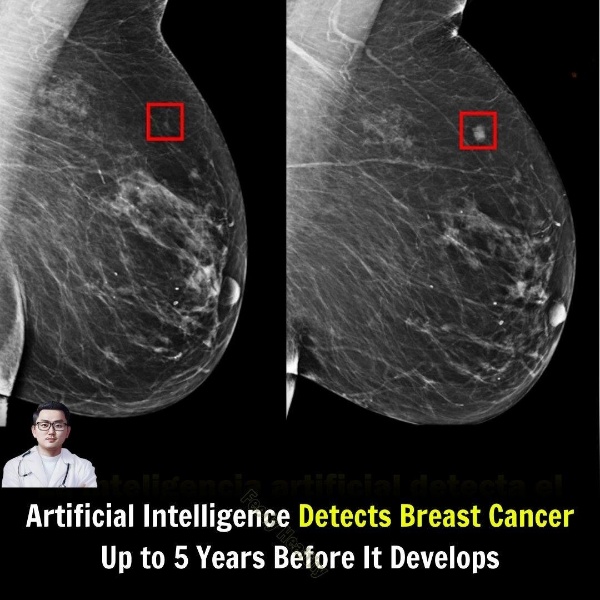Imagine being able to detect breast cancer before it even starts developing, a concept that once sounded like science fiction but is now becoming a reality thanks to advances in artificial intelligence. Recent studies, including one published in JAMA Network Open, show that AI can predict the likelihood of breast cancer developing up to five years before traditional screening methods would ever catch it, and that breakthrough is not just revolutionary—it could be life-saving.

So how does AI make this possible, and what could it mean for the future of early detection, diagnosis, and personalized care? Artificial intelligence is transforming healthcare in profound ways, especially when it comes to catching diseases early. In breast cancer specifically, AI systems have been trained to recognize signs of trouble long before visible tumors appear. Using deep learning algorithms, these systems can analyze thousands or even millions of mammograms, but unlike traditional methods that look for obvious red flags, AI digs deeper, picking up on slight changes in tissue density, minor shifts in texture, and tiny microcalcifications that might escape even the most seasoned radiologist’s eye.
These subtle signals are not random; they are early indicators that cancer could be brewing, even if the patient feels perfectly fine, and some AI models have successfully flagged high-risk patients four to six years before any clinical symptoms showed up. Deep learning, a subset of machine learning, mimics the way human brains process information, using layers of digital “neurons” to break down and analyze medical images piece by piece. In practice, the AI scans a mammogram, identifies important features like density and structure, compares these findings against vast databases of previous outcomes, and then generates a risk score estimating how likely it is that the individual could develop cancer in the near future.
With each mammogram it processes, the AI becomes smarter, learning from past successes and mistakes, constantly refining its diagnostic abilities. Some people fear AI will eventually replace doctors, but in truth, it’s more like giving radiologists a powerful new superpower. Radiologists already have the overwhelming task of combing through thousands of scans, many of which are normal, and by using AI as a “second reader,” they can focus their attention on the patients who need it most. A study published in Radiology found that AI assistance reduced radiologists’ workloads by almost 40 percent without lowering diagnostic accuracy, meaning faster screenings, quicker diagnoses, and better patient outcomes. The benefits of using AI for breast cancer detection are clear. AI has sharper eyes than humans and doesn’t suffer from fatigue, helping it spot minor signs that human eyes might miss. It delivers faster results by prioritizing urgent scans, enabling patients who need treatment to begin sooner.
It reduces the number of false positives, sparing patients the emotional stress and medical risks of unnecessary biopsies. It allows for personalized monitoring through risk scores, helping doctors tailor follow-up care based on individual risk levels, and by comparing mammograms over time, AI can detect slow, creeping changes that might otherwise be overlooked. For patients, this technology brings not only reassurance but also empowerment. Imagine going in for a standard mammogram and leaving with a detailed, science-backed risk assessment in addition to a snapshot of your current health. High-risk patients could be offered closer monitoring, lifestyle guidance, or preventative treatments, while low-risk patients could avoid the stress and financial cost of excessive screening. Looking ahead, AI will do more than just detect cancer—it will change the way we understand it. As more clinics and hospitals integrate AI into their workflows, the quality and volume of data available to researchers will grow, opening new doors for developing better treatments, understanding how breast cancer evolves, and discovering what triggers certain tumor types. In the future, AI could combine mammogram data with blood work, genetic profiles, and lifestyle factors to create comprehensive risk assessments, moving healthcare closer to true precision medicine. Of course, AI comes with challenges, such as ensuring fairness across diverse populations and maintaining strict data privacy protections, but with careful oversight, the potential benefits are enormous. In the fight against breast cancer, artificial intelligence is giving doctors and patients a priceless gift: time. By detecting warning signs invisible to the naked eye, AI offers hope that one day we might stop cancer before it even begins, and that future is already starting to unfold.





